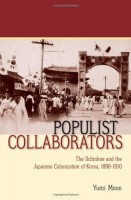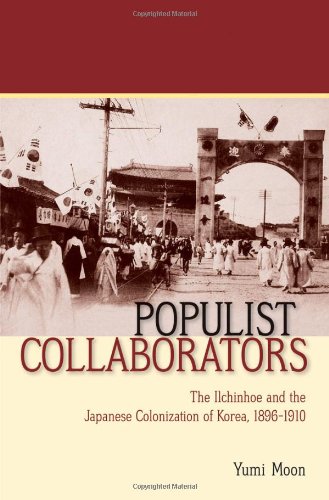 Author: Yumi Moon
Author: Yumi Moon
Publisher: Cornell University Press – 296 pages
Book Review by: Paiso Jamakar
In the Japan-Korea Treaty of 1876, Japan sought to make Korea a part of the Japanese Empire. The Meiji government, along with members of the military and some business people, sought to integrate Korea politically and economically as part of Japan. As a result of this treaty Japanese merchants came into Pusan, which became a thriving Korean port of foreign trade and commerce.
Korea was a protectorate of Japan beginning in 1905, and in 1910 it was officially annexed into Japan. Korea gained its independence in 1945 at the end of World War II.
Between 1896 and 1910, Japan’s activities to colonize Korea were met with the movements of reform-minded Koreans, who wanted to solve the crisis of the Choson dynasty (1392–1910). Among those reformers were the members of the lchinhoe (Advance in Unity Society) who ardently embraced Japan’s call to “civilize Korea,” and saw Japan’s colonization as a chance to advance its own populist agendas.
The Ilchinhoe members, who were actually populist collaborators with Japan, and reformists of the existing order in Korea, called themselves “representatives of the people.” They mobilized popular support for a movement that wanted to protect the people’s freedom, property, and lives. They were willing to sacrifice the sovereignty of the Korean monarchy if that would ensure the rights and equality of the people.
But both the Japanese colonizers and the Korean elites eventually disliked the Ilchinhoe for its aggressive actions including controlling local tax administration and reversing existing power relations between the people and government officials.
The Ilchinhoe members ultimately faced condemnation from their fellow Koreans when their language and actions resulted in nothing but assisting the emergence of the Japanese colonial empire in Korea.
In this book Yumi Moon examines the position of these Korean reformers in the final years of the Choson dynasty, and highlights the global significance of their case for revisiting the politics of local collaboration in the history of a colonial empire.
The contents of this book are organized into seven chapters, preceded by an Introduction, and followed by a Conclusion:
- Introduction
- The Korean Reformers and the Late Choson State
- People and Foreigners: The Northwestern Provinces, 1896-1904
- Sensational Campaigns: The Russo-Japanese War and the Ichinhoe’s Rise, 1904-1905
- Freedom and the New Look: The Culture and Rhetoric of the Ichinhoe Movement
- The Populist Contest: The Ichinhoe’s Tax Resistance, 1904-1907
- Subverting Local Society: Ichinhoe Legal Disputes, 1904-1907
- The Authoritarian Resolution: The Ichinhoe and the Japanese, 1904-1910
- Conclusion
Yumi Moon takes a closer look at the role of the Ichinhoe movement just before and after the start of Japanese rule over Korea, something that has not been done in much detail before. For this reason, Populist Collaborators is a unique contribution to the study of Japanese-Korean history.
Yumi Moon is Assistant Professor of History at Stanford University in California.






